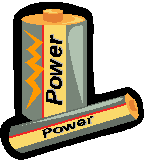|
|
|
|
|
|
|

|
Energy is a major industry in Canada. Canada is lucky to have an abundant supply of fossil fuels, an unending supply of water, and the newest up-to-date technology for powering its vast expanse of land and citizens. Since Canada is so fortunate in the amount of power that is available, we tend to waste it quite a bit. Canadians are close to the largest per capita users (most power per person) in the world. Besides the energy that each citizen of Canada uses, there are many other ways to explain why Canada uses so much energy: Canada has northern climates, so heating is needed throughout almost the entire year. Communities in Canada are spread out over a large amount of land so transportation is used greatly. Our advanced industrial economy uses a great deal of energy.
Energy is produced by using fossil fuels, splitting atoms, or moving water to run a generator which creates power (electricity). Canada has separated their production of energy into three main categories. These ways of producing energy are:
Hydro-Electric (H2O) - produces power by
using moving water. This type of producing energy in Canada is mainly used
in the form of a dam, or in the older days, a waterwheel was used to power
the gears in the mills. Dams are usually placed where
Thermal-Electric - produces power by using expanding steam. This type
of producing energy in Canada uses burning fuel such as coal, oil, natural
gas, wood, and
Nuclear-Electric - produces power by using expanding steam. This way
of producing energy is very much the same as Thermal-Electric, except the
source of heat comes from the radioactive breakdown (fission) of uranium
atoms. The splitting atoms
Although these are the main ways of producing energy in Canada, there are
many other ways also. Other ways of creating energy are wind power,
geothermal power (using
|